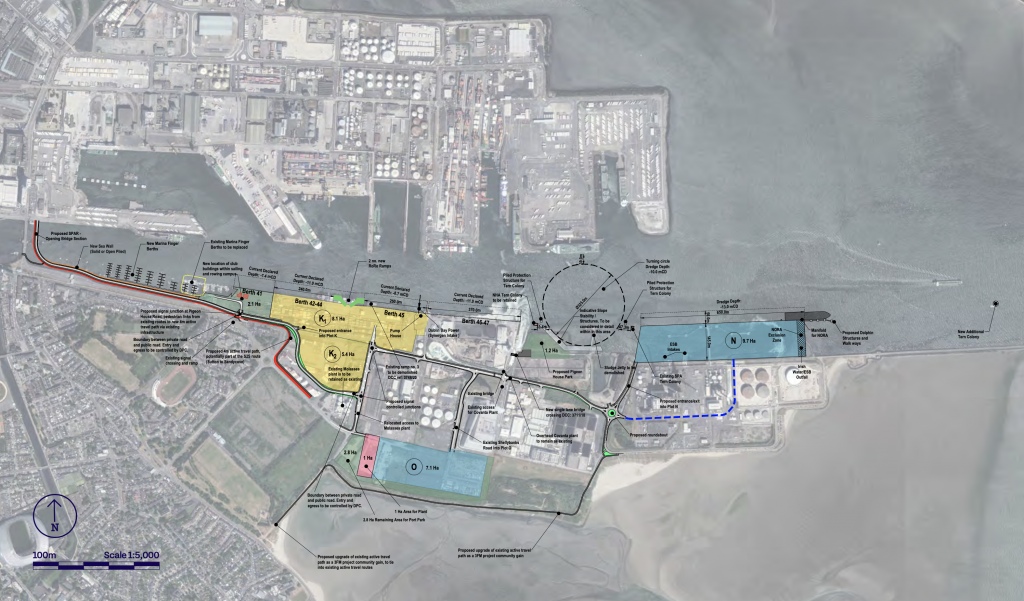
Dublin Port Company (DPC) yesterday unveiled its long-term plan for a €400m expansion of Ireland’s biggest port in the heart of Dublin.
Anchored by the construction of a vast new freight terminal, the plan is intended to deliver 20% of the capacity the port is expected to need by 2040, and will cover a fifth of Dublin Port’s lands on the Poolbeg Peninsula.
The project is at the pre-planning stage and DPC will lodge a planning application with An Bord Pleanála in early 2023. It said construction will commence in 2026 and be completed between 2030 and 2035.
Although the plan is long-range, DPC said “capacity pinch points” were already evident in the north port area following Brexit. It said growth in throughput has accelerated, with this year’s volumes 14% higher than in 2020. It noted that two previously consented capacity-building projects are underway.
In the meantime, DPC will prepare detailed project design and environmental impact reports required for large infrastructure projects.
Called “3FM”, denoting the third and final masterplan project, the scheme has the following main elements:
- • A new private road linking the north and south port areas to take HGVs off the public road via a new bridge across the River Liffey just east of the Tom Clarke Bridge;
- Building the largest container terminal in the country in front of the Poolbeg Power Station with an annual throughput capacity 612,000 TEU, more than twice the number of containers handled in all other ports in the country last year;
- Revamping the existing blue container terminal to create a new Ro-Ro freight terminal with an annual throughput capacity of 288,000 freight trailers;
- Creating a 325-metre-diameter ship turning circle in front of Pigeon House Harbour;
- Developing 6.1 hectares of new public parks in three locations on the Poolbeg Peninsula, including a water sports campus.
“There is very little spare capacity for future growth of unitised trade in Dublin Port or in any other port in the country,” said Dublin Port chief executive Eamonn O’Reilly. “Planning for long-term needs as far out as 2040 is very difficult and it is important for us in Dublin Port to plan early to ensure that we are ready to construct nationally essential port capacity in advance of demand.”










